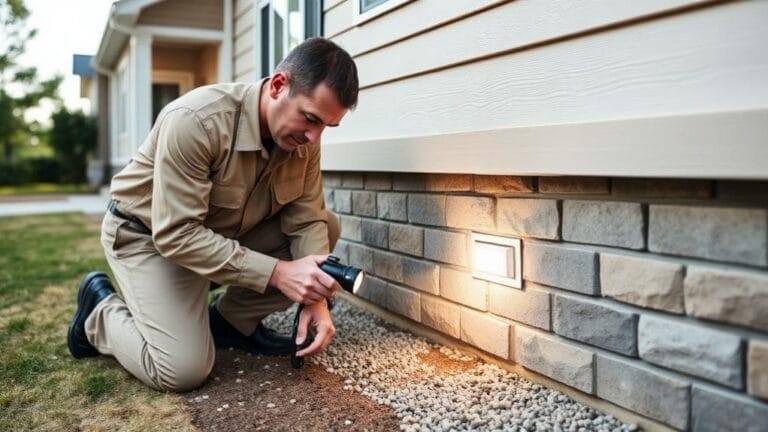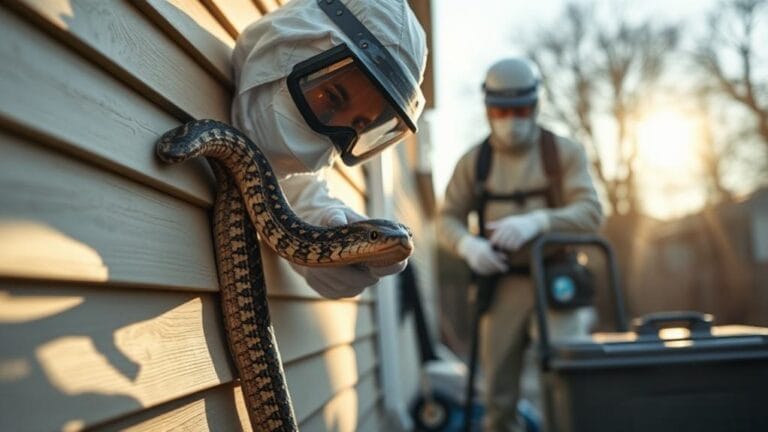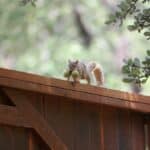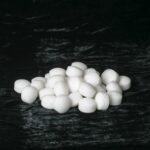Curious about where snakes hide in houses? Well, look no further! This article will guide you through the typical hiding spots of these elusive creatures.
Snakes have a knack for squeezing into tight spaces, so it’s crucial to understand their preferred habitats within your home.
Snakes can be found in unexpected locations, from basements and cellars to kitchens and toilets. Discover why they seek out these areas and learn how to identify their presence.
Plus, find effective ways to prevent and remove snakes, ensuring a safe and snake-free living environment. Ready to become a snake-savvy homeowner? Keep reading!
Key Takeaways
Table of Contents
- Basements and cellars provide a quiet and calm environment for snakes, making them ideal hiding spots.
- Snakes are often found around pipes and water sources, seeking warmth and access to water.
- Wood piles and firewood attract snakes due to the dark hiding places they offer, as well as a potential food source.
- Snakes may hide in laundry rooms and clothing piles as they seek humidity and are attracted to insect infestations.
Basements and Cellars
Basements and cellars offer a quiet and calm environment that snakes find attractive for hiding.
Snakes are ectothermic, meaning they rely on the background to regulate their body temperature. In relaxed environments like basements and cellars, snakes can lower their body temperature, which helps conserve energy.
Additionally, these areas often have an abundance of rodents and insects, which are a vital food source for snakes. Basements and cellars’ dark and secluded nature provide snakes security and protection.
Pipes and Water Sources
Pipes and water sources in your home can be potential attractions for snakes. Snakes are drawn to the warmth around hot water tanks and pipes, using them as hiding spots. They may even follow the pipes in your walls to access your house.
Additionally, snakes need water to prevent dehydration, and they may coil near dripping pipes or faucets to access it.
Snakes Near Water
Snakes may coil near dripping pipes, faucets, or water-based appliances to access water in your home. They need to drink water, even though they get some hydration from their food. Snakes rely on water sources to prevent dehydration.
In times of drought, when freshwater becomes scarce in the wild, snake activity in homes can increase. Some snake species have specialized jaw structures to absorb water. They might follow the pipes in your wall to access your house.
Snakes seek warmth and often find it around hot water tanks and pipes. They may hide under or around a hot water tank and curl around various lines. Snakes around water sources can signify that they’re in your home, seeking hydration and relief from the heat.
Pipes as Snake Pathways
If you have pipes in your home, they can serve as pathways for snakes to enter. Snakes are known for their ability to squeeze through narrow spaces, including small openings around pipes.
Understanding snake behavior and implementing snake-proofing techniques can help prevent these slithering creatures from invading your home through the lines.
To provide you with a deeper understanding, here is a table highlighting snake behavior and effective snake-proofing techniques:
| Snake Behavior | Snake-Proofing Techniques |
|---|---|
| Seek warmth and shelter | Seal any gaps or cracks around pipes |
| Follow water sources | Install mesh covers or caps on pipe openings |
| Hide in dark and quiet areas | Insulate pipes to reduce warmth and noise |
| Squeeze through small openings | Use door sweeps to seal gaps under doors |
| Can climb vertically | Install pipe guards or barriers |
Trapped Snakes in Tanks?
You may find it surprising, but snakes can occasionally become trapped between a hot water tank’s internal tank and the external housing unit. This can happen for various reasons, such as the snake seeking warmth or accidentally slipping into a narrow space.
Snake tank accidents can be dangerous for both the snake and the homeowner. Here are some key points to consider:
- Snakes may seek warmth around hot water tanks and pipes.
- Snakes can get trapped between the tank and the housing unit, causing distress.
- Snake tank accidents can be prevented by ensuring proper insulation and sealing openings.
If you encounter a trapped snake in your hot water tank, it’s essential to contact a professional wildlife removal service for safe and humane removal. Resisting wildlife is possible, but ensuring everyone’s safety is paramount.
Wood Piles and Firewood
Snakes find their favorite foods, such as insects and mice, in wood piles. They are attracted to wood piles because they provide dark hiding places and a steady supply of prey.
Also, snakes often use wood piles to shed their skin. The wood’s rough bark helps them slough off their old skin, allowing for growth and renewal. This behavior is crucial for snakes to maintain their health and freedom of movement.
However, being cautious when handling wood piles is essential, as snakes may hide within. Storing firewood in a container with a lid can help prevent snakes, rodents, and insects from residence in your woodpile, ensuring a safe and snake-free environment.
| Emotion | Reason | Action |
|---|---|---|
| Fear | Snakes in wood piles can be unsettling and evoke fear in people. | Take precautions, wear gloves, and use a tool when handling wood piles. |
| Caution | Snakes in wood piles pose a potential risk of snake bites. | Be aware of your surroundings and avoid reaching unquestioningly into a wood pile. |
| Disgust | The idea of snakes hiding in wood piles can be repulsive to some individuals. | Keep wood piles neat and organized to discourage snake habitation. |
| Intrigue | The behavior of snakes shedding their skin in wood piles is fascinating. | Learn more about snake biology and their unique adaptation for shedding. |
| Relief | Proper storage of firewood can prevent snakes from entering your home. | Store firewood in a container with a lid to keep snakes out and ensure peace of mind. |
Laundry Rooms and Clothing
Laundry rooms and clothing can be prime hiding spots for snakes. These areas often provide the humidity that snakes need to prevent dehydration and shedding problems. Insect infestations in laundry rooms also attract snakes, as they offer a convenient food source.
To prevent snakes from accessing your clothing, storing your laundry in hampers with lids is recommended. Keeping the clothing storage areas clean and organized can also help deter snakes from making their homes there.
Hiding in Clothing Piles
If you’ve clothing piles in your home, you must know that snakes may be attracted to these dark and quiet hiding places. Snakes hiding in clothing piles can pose potential risks when handling laundry.
To prevent snake incidents and ensure your freedom from their presence, it’s crucial to take preventive measures. Here are some steps you can take:
- Keep clothing storage areas clean and organized to discourage snakes from hiding.
- Store laundry in hampers with lids to prevent snakes from accessing the clothes.
- Regularly clean and maintain your laundry room to reduce humidity and insect infestations.
Moisture and Bug Attraction
Keeping your laundry room clean and dry is essential to minimize the moisture and bug attraction that can attract snakes.
Snakes are drawn to humid environments because they need humidity to prevent dehydration and shedding problems. Laundry rooms often have high humidity levels, making them attractive to snakes.
Additionally, insect infestations in laundry rooms provide a food source for snakes. To prevent snakes from hiding in your laundry room, storing your laundry in hampers with lids is essential to prevent snakes from accessing the clothes.
Keeping the clothing storage areas clean and organized can also discourage snakes from hiding.
Preventing Access to Clothes
To prevent snakes from accessing your clothes and potentially posing a risk, there are several steps you can take in your clothing storage areas. Here’s what you can do:
- Keep your clothing storage areas clean and organized. Snakes are more likely to hide in cluttered spaces, so by keeping things tidy, you discourage them from taking up residence.
- Store your laundry in hampers with lids. This helps create a barrier between the snakes and your clothes, making it harder for them to access and hide within the piles.
- Regularly inspect your clothing for signs of snake presence, such as shed skin or droppings. If you find any evidence, immediately remove the snakes and ensure they can’t return.
Kitchens
Kitchens provide abundant food, water, and shelter for snakes. To prevent kitchen infestation, it’s essential to understand the common kitchen snake species.
The table below highlights three snake species that are often found in kitchens:
| Snake Species | Description | Prevention Tips |
|---|---|---|
| Black Rat Snake | Non-venomous snakes are commonly found in homes. | Seal all entry points and keep the kitchen clean and food debris-free. |
| Eastern Milk Snake | Harmless snake is known for its colorful pattern. | Store food in airtight containers and regularly clean kitchen cabinets. |
| Northern Water Snake | Semi-aquatic snakes are attracted to water sources. | Fix any plumbing leaks to ensure proper drainage in the kitchen area. |
Toilets
Toilets can be an unexpected location for encountering snakes in your home. While rare, snakes may enter toilets either in search of water or due to accidental entry.
It’s essential to properly maintain your plumbing systems to help prevent snake encounters in toilets.
Snake in Toilet Risks
If you find a snake in your toilet, contacting a professional for safe removal is important. Snakes in bathrooms can be a startling and potentially dangerous situation. Here are some risks to be aware of:
- Snake behavior: Snakes can be unpredictable and may become defensive or aggressive if they feel threatened. It’s best to leave the handling of snakes to professionals who have the knowledge and experience to remove them safely.
- Toilet safety: Snakes in toilets pose a risk to your safety. They can bite if they feel threatened, and some snake species are venomous. Additionally, the presence of a snake in your toilet indicates a potential issue with your plumbing system that needs to be addressed to prevent future encounters.
- Hygiene concerns: Snakes in toilets can contaminate the water supply and spread bacteria or parasites. It’s essential to resolve the situation promptly to ensure your bathroom’s cleanliness and safety.
Preventing Snakes in Toilets
Ensure your plumbing system is maintained correctly to prevent snakes from entering your toilet.
Snakes can accidentally enter bathrooms in search of water or due to a plumbing issue. Taking the necessary precautions and conducting regular maintenance can greatly reduce the chances of encountering a snake in your toilet.
Start by checking for any leaks or cracks in your plumbing pipes and fixing them promptly. Ensure that your toilet is properly sealed to the floor and that there are no gaps or openings where snakes could enter.
Additionally, consider installing a mesh screen or a flap valve on the sewer vent pipe to prevent snakes from crawling into your toilet.
Regularly inspecting and maintaining your plumbing system will help prevent accidental entry by snakes and ensure the overall functionality and efficiency of your home’s plumbing.
Identifying Snakes in Toilets
You can identify the presence of snakes in your home by looking for shed skin, droppings, and tracks near baseboards. These signs can help determine if there are snakes in your house.
Snakes have unique behaviors and can sometimes find their way into unexpected places, such as toilets. While this may be a rare occurrence, taking precautions for toilet safety is essential.
To prevent snake incidents in toilets, properly maintain your plumbing systems and consider closing toilet lids when not in use.
If you do encounter a snake in the toilet, it’s crucial to contact a professional for safe removal.
Identifying Snake Presence in the Home
Look for shed skin and droppings as signs of snake presence in your home. Shed skin clearly indicates a snake has been in the vicinity.
Snakes shed their skin as they grow, leaving a delicate, translucent covering behind. These skins can often be found in dark, secluded areas such as basements, cellars, or closets.
Snake droppings, also known as scat, can vary depending on the species but usually resemble small, elongated pellets. Look for these droppings in areas where snakes may hide, such as crawl spaces or behind furniture.
Additionally, snake tracks near baseboards can be another clue to their presence. Snakes often leave tracks as they move along the edges of walls.
Preventing and Removing Snakes From the Home
Eliminate debris and clutter in your yard where snakes may find hiding spots by regularly cleaning and organizing outdoor areas. This simple step can help minimize the chances of snakes residing near your home.
In addition, other ways exist to prevent and remove snakes from your property. Consider using snake repellents to deter snakes from entering your yard.
If you encounter a snake in your home, it’s essential to approach the situation cautiously. Instead of resorting to harmful methods, opt for humane snake removal techniques, such as calling a professional snake handler.
They have the expertise to safely capture and relocate the snake without causing harm to either you or the snake.
Attics and Crawl Spaces
Regarding snakes in your house, attics and crawl spaces can be prime hiding spots. These areas provide snakes with the ideal habitat to survive and thrive.
Attics, mainly, are known to be snake habitats due to their dark, secluded, and often warm conditions. Snakes are natural climbers and can easily access attics through small openings or gaps in the roof.
Crawl spaces, on the other hand, are typically found beneath the house and provide snakes with ample space to slither and hide.
These areas are often damp and calm, which snakes find appealing. If you suspect a snake infestation in your home, it is crucial to thoroughly inspect both the attic and crawl spaces to ensure they are not serving as hiding spots for these reptiles.
| Attics | Crawl Spaces |
|---|---|
| Dark and secluded | Damp and cool |
| Easy access for snakes | Ample space for hiding |
| Often warm | Potential hiding spots |
Taking steps to snake-proof these areas, such as sealing openings or gaps, can help prevent snake infestations in your home.
Keeping these areas clean and clutter-free can make them less attractive to snakes. Regular inspections and maintenance are crucial to keeping snakes out of your attics and crawl spaces.
Outdoor Structures and Garden Areas
If you’ve outdoor structures or a garden area, it’s essential to know that snakes can seek shelter and food in these areas.
Snakes are adaptable creatures and can find hiding spots in various parts of your property.
Here are a few places where snakes may hide in outdoor structures and garden areas:
- Wood piles: Snakes are attracted to the dark hiding places that wood piles offer. In these piles, they can find their favorite foods, such as insects and mice.
- Garden sheds: Snakes may seek shelter in garden sheds, especially if they’re warm and provide protection from predators.
- Underneath decks or porches: The space underneath these structures can be an inviting spot for snakes to hide and find food.
Keeping snakes clean and debris-free is essential to prevent snakes from making these areas their homes.
Regularly inspect and seal any openings that may allow snakes to enter. By taking these precautions, you can enjoy your outdoor spaces without the worry of encountering snakes.
Frequently Asked Questions
Can Snakes Climb Walls and Ceilings to Access Different Areas of the House?
Yes, snakes can climb walls and ceilings to access different areas of your house. To snake-proof your home, seal all entry points, eliminate clutter, control food sources, and remove water sources inside and outside.
Are Any Specific Snake Species More Commonly Found in Basements and Cellars?
Some snake species, like the Eastern Rat Snake, are commonly found in basements and cellars. They choose these cool, quiet hiding spots to regulate their body temperature and feast on rodents and insects.
How Can I Safely Remove a Snake From My Basement or Cellar if I Find One?
To safely remove a snake from your basement or cellar, take precautions: 1) Stay calm and keep your distance. 2) Call a professional snake handler. 3) Seal any entry points to prevent future snake encounters.
Do Snakes Pose a Danger to Household Pets if They Hide in the House?
Snakes hiding in your house can be a danger to household pets. They can cause allergies and bites. Prevent this by keeping pets away from snake-infested areas and seeking necessary veterinary care.
What Are Some Signs That Snakes May Be Hiding in Attics and Crawl Spaces?
Signs of snakes in attics and crawl spaces include shed skin, droppings, musky odor, and tracks near baseboards. To prevent snakes from entering homes, eliminate clutter, control food sources, remove water, use repellents, and seal entry points.
Conclusion
In conclusion, by understanding the preferred hiding spots of snakes in houses, you can take proactive measures to keep your home snake-free.
From the calm and quiet haven of basements to the abundance of food in kitchens, these elusive creatures can be found in unexpected places.
You can ensure a safe and peaceful living environment by identifying their presence through shed skin, droppings, and tracks.
So, stay vigilant and take the necessary steps to prevent and remove snakes from your house, becoming a snake-savvy homeowner.








